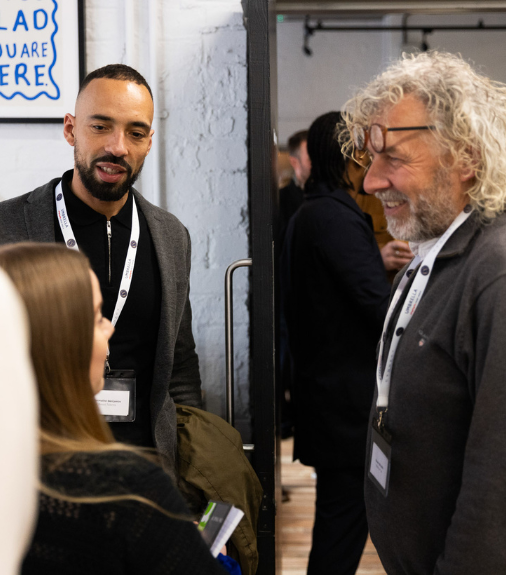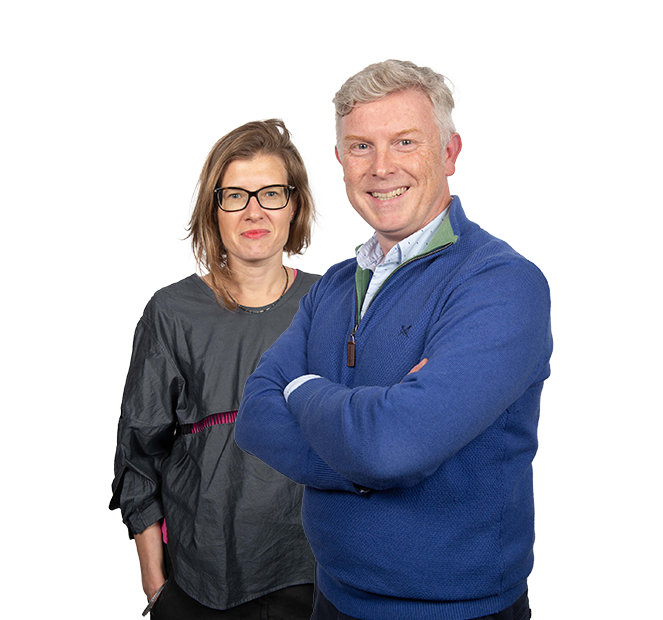Embracing diversity: lead the way in multigenerational workplace dynamics
Explore the dynamics of a workforce spanning five generations, emphasising the need for nuanced strategies to harness technology, ensure psychological safety, and promote work-life balance as well as utilising innovative engagement ideas and strategic responses to diversity. In this article, we provide a unified approach to creating an inclusive, adaptable workplace.
Reading time: 3 minutes
We recently hosted an insightful panel discussion titled “Bridging the Gap: The Future of Multigenerational Work,” held at Brew Society in Leeds, in partnership with Partners& and Connect Yorkshire.
The discussion brought together leading voices to explore managing diverse workforces, featuring insights from an expert panel, including Simon Biltcliffe, Founder & Executive Chairman of Webmart; Elena Bunbury, Junior Account Manager at Hatch PR; Dale Graham, Principal Consultant and DEIB (Diversity, Equity, Inclusion, and Belonging) Client Lead at Q5; and Jermaine Benjamin, Director at Boost Talent, with Claire Hamlin facilitating the conversation.
The experts delved into the evolving landscape of today’s workforce, characterised by an unprecedented mix of up to five different generations. The panel offered insights into managing a diverse workforce and how to successfully navigate the complexities of a multigenerational workplace. Some key themes discussed were:
Understanding multigenerational workforce dynamics
- Diverse generational traits: The panel highlighted characteristics of different generations, from the ‘Silent Generation’’s loyalty and tradition to Gen Z’s progressiveness and desire for authenticity. These traits inform workplace preferences, challenges, and opportunities.
- Challenges in collaboration: With multiple generations in the workforce, there’s a growing need to address stereotypes and foster collaborative environments despite differing values, behaviours, and expectations.
Addressing workforce changes
- Growth of the aging workforce: Strategies for talent retention and adapting workplaces for the rapidly growing segment of workers aged 65+.
- Millennials and Gen Z: These groups are becoming a major part of the global workforce, requiring shifts in talent strategies and employee value propositions to match their expectations.
Building inclusive and diverse teams
- Focus on social impact and purpose: Modern workers, especially younger generations, seek authentic engagement and companies with a clear social impact, moving beyond traditional corporate objectives.
- Innovative approaches to engagement and retention: Examples include Webmart’s investment in an “oxygen farm” for employee and ecological benefit and implementing diverse rewards and recognitions that resonate across generations.
- Psychological safety and empathy: Highlighting the importance of creating safe spaces for open communication, understanding diverse experiences, and the necessity of empathy in leadership.
Leveraging communication and flexibility
- Changing communication preferences: Evolving communication styles, from formal modes preferred by older generations to the digital-first approach of younger workers.
- Work-life balance and flexible working: There’s a shifting perspective towards valuing personal time, challenging traditional norms of overtime and career progression based solely on extra hours worked.
Strategic responses to diverse needs
- Cultural and reward programs: Implementing structured programs to cultivate organisational culture and tailor rewards to meet the diverse needs and preferences of a multigenerational workforce.
- Authenticity and human connection: Encouraging leaders and organisations to foster genuine connections, celebrate individuality, and recognise the unique contributions of each generation.
This panel not only provided valuable insights into the complexities and opportunities of managing a multigenerational workforce but also showcased practical strategies and heartfelt stories from leaders striving to bridge the generational gap in today’s dynamic work environments.
If the multigenerational workforce is something you are interested in or if you have any questions, we’d love to chat!

Claire Hamlin
Director of Purpose and Sustainability
claire.hamlin@q5partners.com

Dale Graham
DEIB Client Lead & Principal Consultant
dale.graham@q5partners.com



